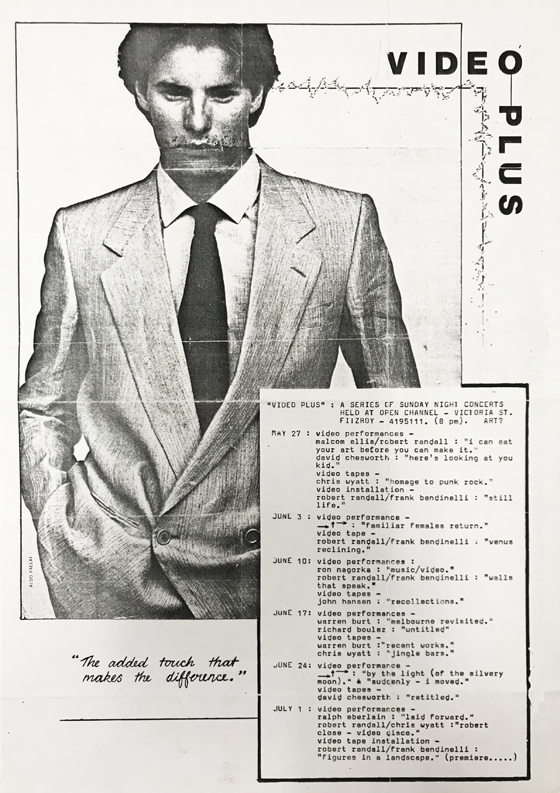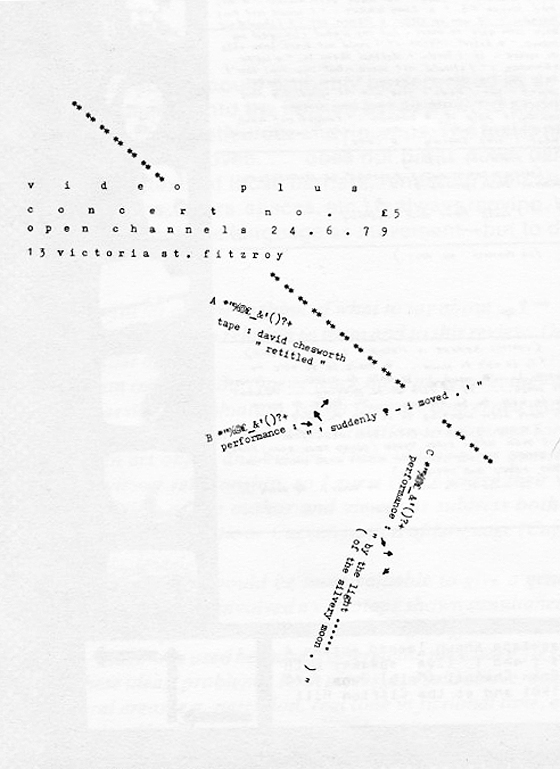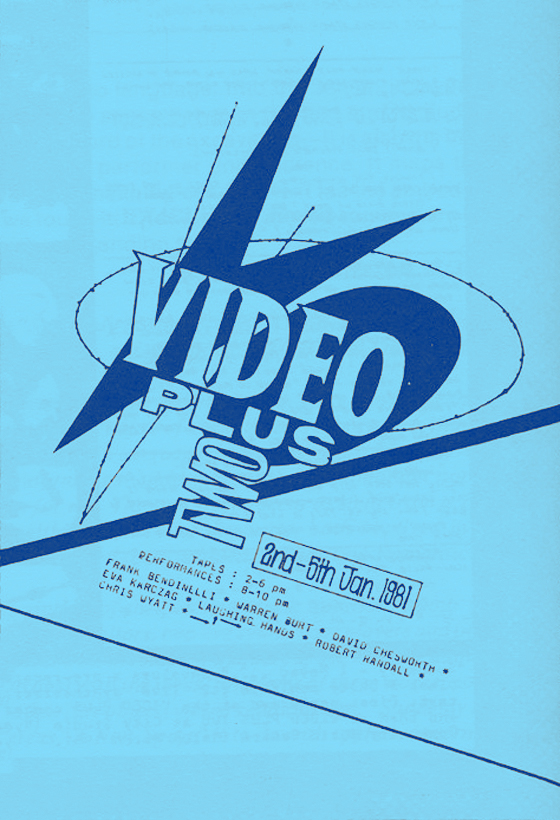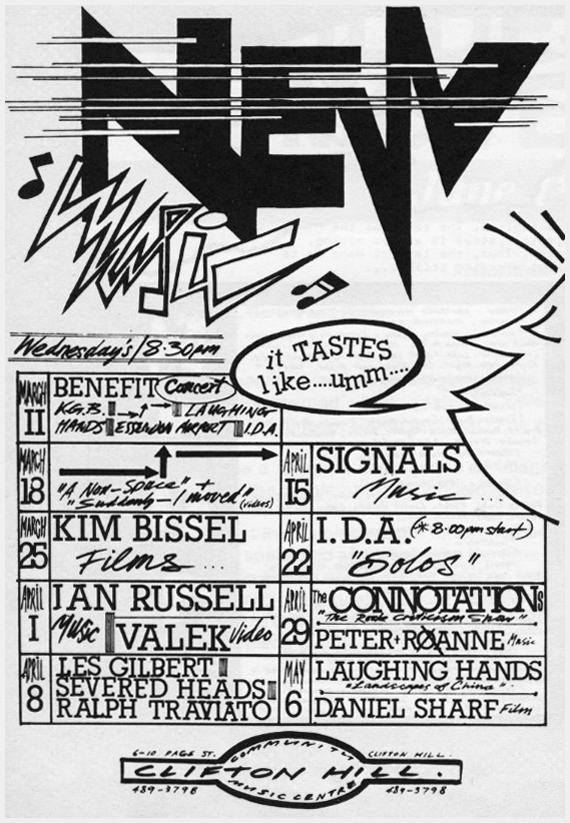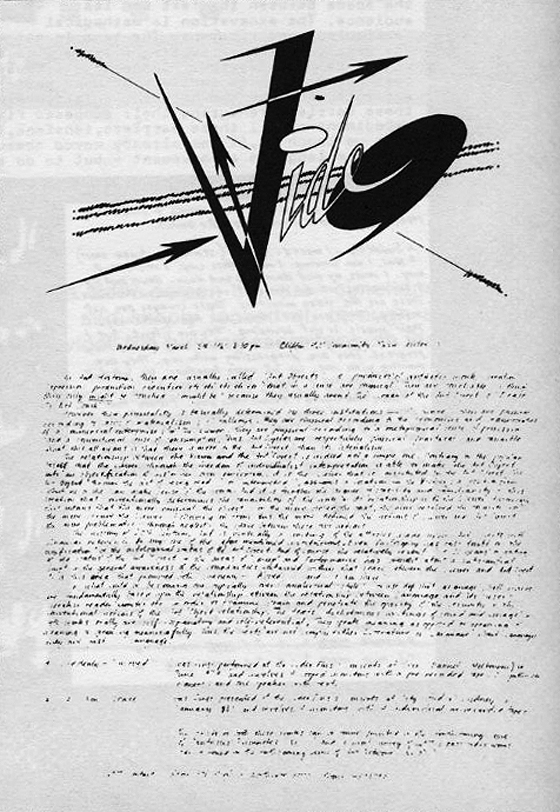a  production
production
Background
A 20 minute performance involving 4 players (sax, guitar & 2 synthesizers) and 4 TV monitors performed live by → ↑ →.
Ralph Traviato, Anthony Montemurro, Philip Brophy & Leigh Parkhill - Open Channel, Melbourne © 1979Credits
Concept & direction - Philip Brophy
Performers - Ralph Traviato, Anthony Montemurro, Philip Brophy & Leigh Parkhill
1979
VIDEO PLUS - Open Channel, Melbourne
1981
VIDEO PLUS TWO - City Studio, Sydney
Clifton Hill Community Music Centre, Melbourne
Monash University Gallery, Melbourne
1984
Praxis, Fremantle
Ralph Traviato, Anthony Montemurro & Leigh Parkhill - Open Channel, Melbourne © 1979Overview
Suddenly I Moved is part of a trilogy of multi-monitor video performance/installation pieces developed by → ↑ → around this time - the other two being By The Light Of The Silvery Moon (1979) and A Non Space (1981). These earlier experiments in audiovision would determine Philip Brophy's approaches to film scores and sound design for many years to come.
From the original programme note
Suddenly – I Moved … could probably be described as an excavation into language. Into the semantic layers between grammar and the speaker; into the tension between word and image; into the space between the text and its audience. The excavation is methodical, meticulous and rigourous. The text is not only the record of the excavation – it is also the object being excavated. Suddenly – I Moved … does not breakdown barriers between performance and audience. It maps the shifting relationships and contexts of those barriers, rendering there supposedly fixed city meaningless. The text (as the embodiment of all these barriers, tensions, layers, spaces, etc.) is always moving. When we touch it, it has already moved somewhere else. Thus, the task at hand is to indicate language as movement—but to do so without standing still.
Maria Kozic; Philip Brophy - City Studio, Sydney © 1981Technical
From the original programme note
This piece, basically, presents a series of images (minus sound) on the video screen that are – simultaneous to their appearance – questioned, commented upon, analysed, ridiculed, probed, and simply looked at, through a continually changing process of combining image, sound and text. The video tape provides the running score for both the synthesizer players and the reader.
The performance involves a physical segregation of image, sound and text (supplied by video tape, synthesizers and speaker) to clearly underline the problems in the congealed moment of these three components into the one ‘unified text’ (television, film, theatre, etc.).
The general area looked at in this case is the difference between the space of Non-Language and the space of Language; between the time before we speak and after; between the time before the piece starts and the time its duration. Such is the task of our surgical operation on the notion of the ‘unified text’.
The continuous analogy used in articulating these differences is movement: spatial, visual, temporal, semantic, textual and linguistic. In short, the effect of this piece is not dissimilar to sitting through a tedious grammar class. But there is, hopefully, a bit more to be got from this piece then that.






